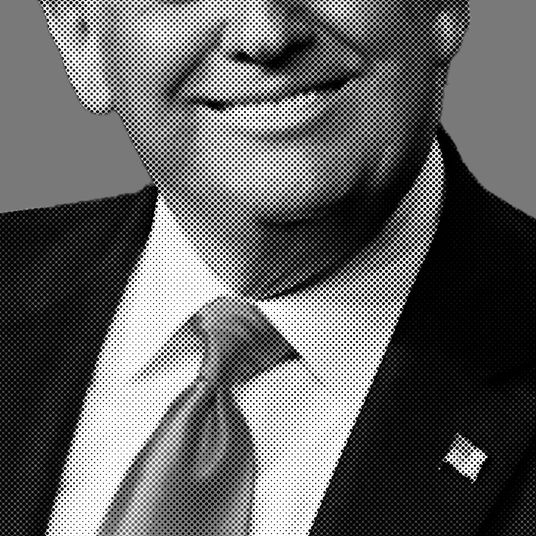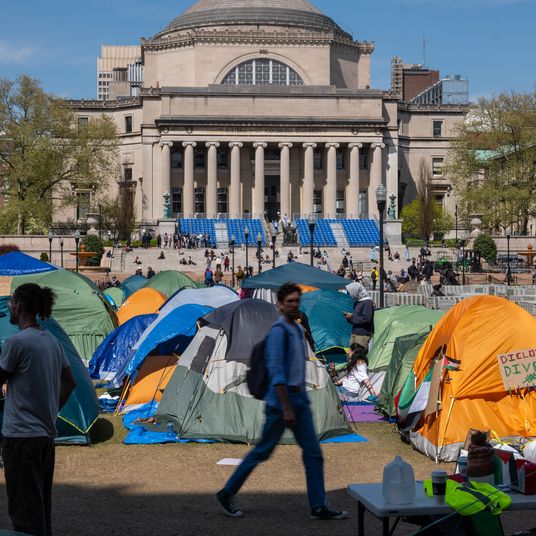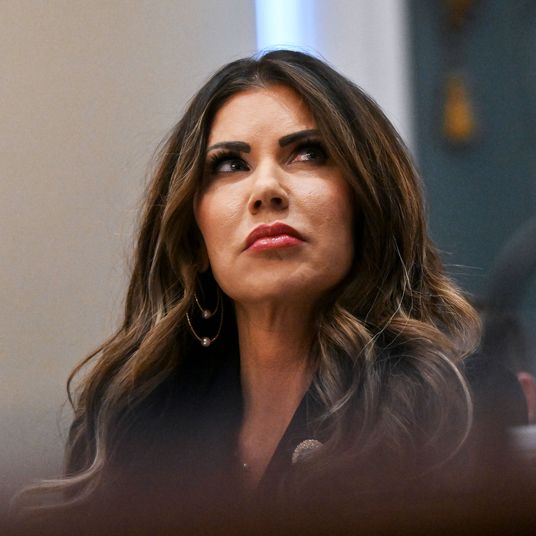At a private donor confab in February, Donald Trump emphasized to a room full of wealthy loyalists that he would focus on cutting their taxes in a second term. The Biden campaign has used this promise against him, which is likely the key context to a new Reuters report that Trump is “is keen on a new middle-class tax cut should he return to the White House.”
Generally speaking, trying to dissect one of Trump’s policy promises is a futile task. He has little understanding of economics or government and instinctively lurches between contradictory promises and toward the favored position of whoever he is engaging like a one-celled organism moving into the light.
That said, reducing taxes for the rich is a goal Trump has pursued consistently, despite often making dishonest claims to do the opposite. (A forgotten episode in Trump’s career is his aborted 2000 presidential campaign under the Reform Party, in which his main domestic-policy motivation appeared to be anger at Bill Bradley over the 1986 Tax Reform Act, which stripped loopholes away from real-estate developers.)
More importantly, tax cuts for the rich remain vital for cementing the shaky loyalty of the Republican elite. For 40 years, reducing effective tax rates on the rich has been the Republican elite’s core ideological commitment — one lubricated heavily by the self-interest of its donors. The belief that progressive taxation is economically harmful and wrong on principle is a rarely articulated but deeply held belief around which everything else Republicans do revolves. Trump’s commitment to advance this agenda is an important reason why his party overlooked his string of corrupt and dangerous behavior right until January 6, 2021.
Most Americans hate giving rich people tax cuts. Traditionally, Republicans compensate by packaging the tax cut for the rich with tax cuts for the middle class. That formula worked well enough for Trump during his first term, just as it worked for George W. Bush and Ronald Reagan.
But the economic circumstances of a second Trump term are likely to be very different, and rewarding the Republican donor class with tax cuts is likely to force the middle class to pay for it.
For more than two decades, from the Clinton administration through the Trump administration, the federal government has been able to borrow money cheaply on the global market. Sometimes critics warned that deficit spending would bring a price, but that price never came due — there was an inexhaustable supply of investors willing to park their savings in government debt at low rates. That is why a string of borrowing, to fund things like Bush tax cuts, expensive wars in Afghanistan and Iraq, the response to the global financial crisis, the Trump tax cuts, and finally the COVID pandemic. Both parties, but especially Republicans, felt free to jack up the deficit at will because deficit spending was free.
Biden’s domestic agenda was designed in this low-interest rate, low-inflation environment. That is why Biden, who took direct inspiration from progressives like Bernie Sanders and Elizabeth Warren, believed he could create transformative expansions of the domestic safety net without taxing the middle class.
But by the time Biden began implementing his program, the aftereffects of the pandemic had already reshaped the environment. Rising inflation turned the public against him quickly and made moderate Democrats skeptical of his social spending plans. The global lurch from shutting down the economy during the COVID pandemic to opening it back up creating waves of inflation that have caused disruptions everywhere. The United States has managed to contain the wave of inflation that struck during Biden’s first two years, but at the cost of elevated interest rates. Interest rates and inflation have largely frozen the progressive goal of completing the safety net.
Trump has not changed his policies in response to changing circumstances. But if he takes office, the economy is going to get a vote.
In the new economic environment, passing tax cuts for the rich will likely have an immediate cost. It’s been decades since we experienced it, but this sort of trade-off used to be routine. George H.W. Bush was desperate to reduce the deficit in 1990, ultimately agreeing to a slight tax hike on the rich to get Democratic support, because he needed to bring down interest rates. Bill Clinton likewise had to scale back his plans to stimulate the economy when he took office and focused on deficit reduction, because his immediate objective was to bring down interest rates (which he did). Even faint indications they would fail to reduce deficits often sent rates climbing.
If and when Trump passes his tax cuts for the rich, there will be a market signal that forces a response. One possibility would be to pair tax cuts for the rich with deep cuts to Social Security and Medicare. Trump went along with a suggestion he do so floated by a conservative CNBC host, but quickly recognized his error and backed away. Another possibility would be for Trump to pressure the Federal Reserve to keep rates low, but that can also backfire. Larry Summers, speaking at the World Economic Forum, warned that a second Trump term would risk an uncontrollable inflationary spiral.
Which way Trump would turn is difficult to forecast. Probably, knowing Trump, he would lurch in different directions simultaneously. But fundamentally he and his party are locked into a policy choice. The rich are going to get a tax cut, and the middle class will pay for it with lower benefits, higher prices, or both.





























